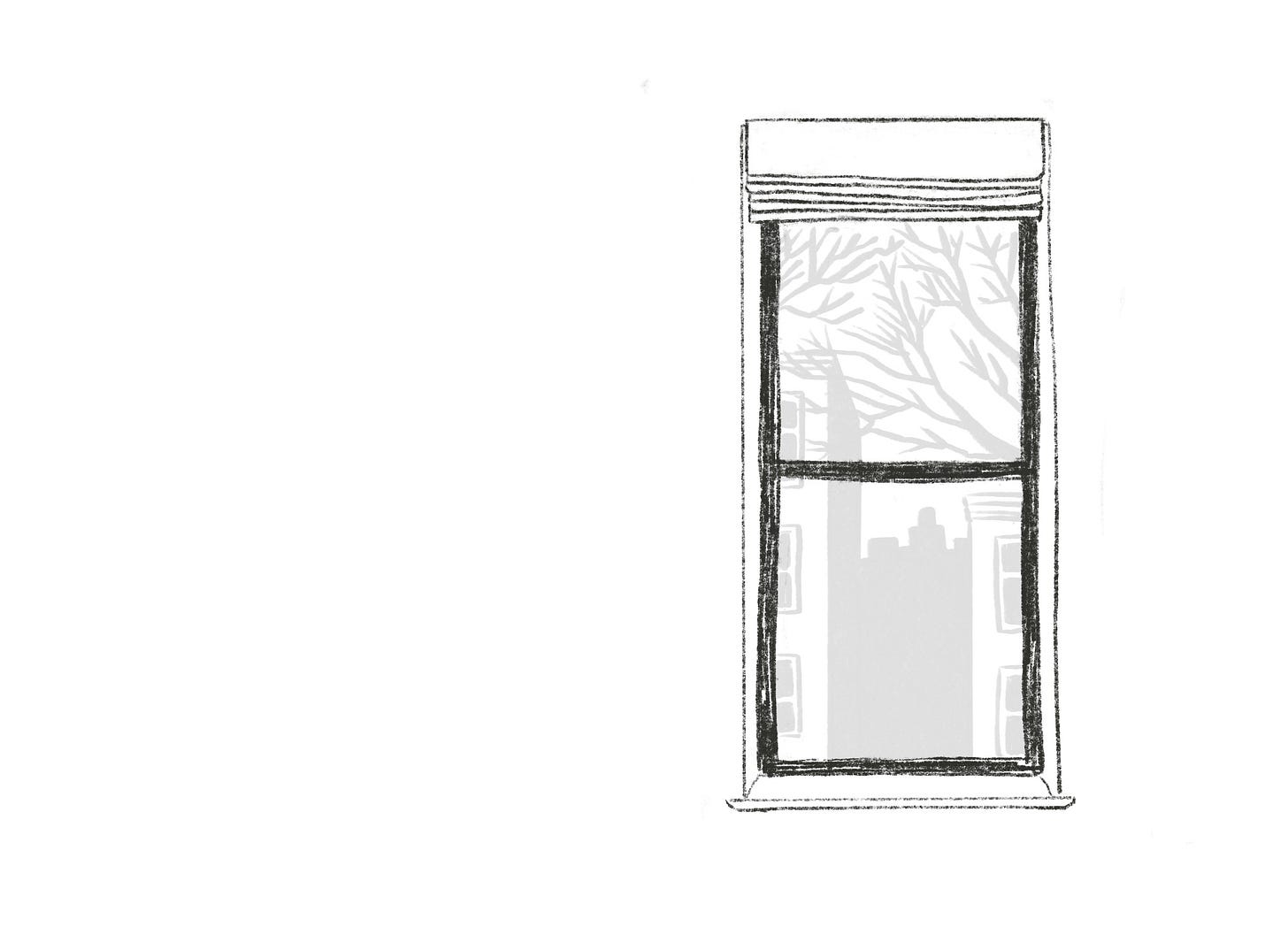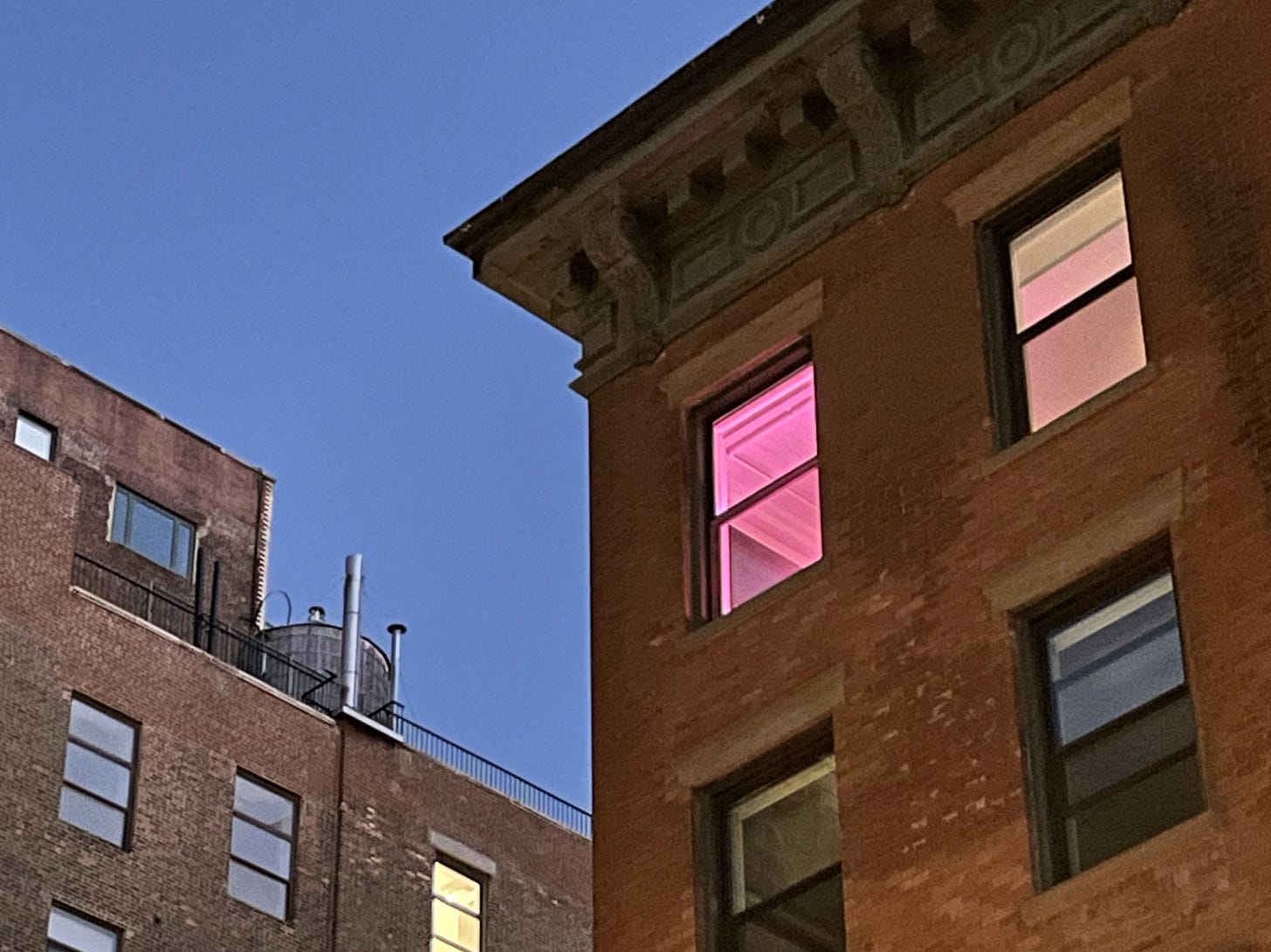The branches beyond my window shivered against a pale blue January. Charcoal lines on a pastel sky. How quickly I forget the leaves of last summer, the taste of salt.
Last month, I sat on cushioned leather seats in a dim theater, crossing my legs twice to warm them up. Even though it was 25 degrees out, I chose to wear a dress to the show because it was a jazz quartet at Yale featuring the artist and musician, Cécile McLorin Salvant—a performance that deserved (to me) a certain level of sartorial panache.
“I might as well have just worn a layer of gauze,” I whined as we walked through campus, clutching the thin hem of my dress over my boots. We passed a group of undergrad girls wearing mini skirts, shrieking happily into the thin air. It was one of those icy, clear January nights—the sky an ink black, no clouds in sight—a lively cold plunge.
When the show began, I noticed that the women seated in the row ahead created an interesting frame for my view. One had a shaved head; the other, tight curls that sprang outward—soft and lovely.
Throughout the performance, I marveled as the stage lights matched the mood set by the jazz quartet. The colors were so bright they seemed to vibrate against the outlines of the women’s hair—that curly frame cutting into the blue or magenta of the stage curtains. I desperately wanted to paint the scene.
After the quartet stepped off stage, there was time for a “talk” with a professor and Cécile. The discussion began with an invitation to leave if one had somewhere to go. I really just wanted to go enjoy a glass of pinot noir with my boyfriend, but along with the rest of the audience who was suddenly reminded of the friction between etiquette and free will, just kind of briefly rose and patted my coat pockets before sitting back down.
At some point in the conversation, Cécile talked about how she’d taken up drawing. My ears perked up, the pinot noir forgotten. She explained that her mind naturally organizes the world into neat buckets—one for making music, another for visual art. I assumed that this tendency extended to other aspects of her worldview—I, too, wrestle with my own set of buckets.
Her voice wavered slightly as she explored whether her drawing practice could inform her music-making. She spoke about how this exercise was helping her see the world from a fresh, perhaps even more accurate, perspective.
"I don’t know if I’m making sense,” she laughed. I wanted to tell her she made perfect sense. Seeing something through a new lens doesn’t just change how it appears; it makes it more vivid.
One of the first lessons in art school was to draw what you see, not what your brain has memorized. When faced with a still life—say, a bowl of oranges—you force yourself to capture not the known version of an orange (an orange circle) but what you actually observe: wobbly, textured stones with golden rims where the kitchen light touches their tops and blue or red shadows beneath.
During this first year, I remember my figure drawing professors roaming the studio like cougars, swiping charcoal from our hands and marking our sketches to correct them.
“See here? Here’s where the shadow lies.”
“Do you see the curve of the spine, and how it is actually resting this way?”
“Don’t be afraid to be loose with it. This isn’t a masterpiece—DID YOU ALL HEAR THAT?—WE’RE NOT CREATING MASTERPIECES! Sorry to use you as an example, dear, but now here: this is a study. Be messy! Find the moments of contrast.”
At first, I felt discouraged every time my precious oil stick was kidnapped from my grasp, interpreting it as a sign of failure. But as the semester progressed, I began to enjoy it. What would I see after the professor’s marks were made? What had I been missing before?
Soon enough, I started to view the world outside the studio in this way. I began to translate my observations into different mediums—my walk home rendered in chalky pastels, the corner bar in thick strokes of oil paint. The world became romantic, peculiar, interesting.
In writing, we’re also taught to capture what we see—to infuse our words with the raw details of our experience. This practice not only brings our descriptions to life but also transforms the way we interact with the world, enriching our internal landscape. In White Fang, Jack London doesn’t simply describe a forest as “empty and cold” but rather creates a living image of its wild, haunting beauty:
Dark spruce forest frowned on either side of the frozen waterway. The trees had been stripped by a recent wind of their white frosting, and they seemed to lean toward each other—black and ominous—in the fading light...
– Jack London, White Fang
Why use all those words when we could easily settle for “empty and cold?” Well, why have dessert after dinner? Why sit in the sand and watch the sun sink into the horizon?
London’s imagery and Cécile’s exercises explain the value of seeing the world differently. Learning to observe and translate these subtleties into a painting, novel, or song doesn’t just make for good art—it enriches life itself by deepening our understanding of beauty and truth.
It’s easy to question the worth of art when evaluated through the lens of productivity or purpose. I even question it on days when my wallet opens up dusty and I wonder why I didn’t study economics. But then I look out my window—as I am now, curled up typing this—and see how the winter branches slice through the February fog, a shattered mirror in the sky. I see the sculptural way people hold their hands, the colors inside shadows, the way the surface of water wrinkles like parchment in the wind.
It’s not always about recreating these things in my sketchbook, but in my attempts to do so, I have cultivated an appreciation for the world around me that I might never have discovered otherwise.
With these new eyes, my inner life is rich in texture and color, in light and shadow.




Dear Emily, this is so wonderfully written. And your drawings are wonderful, too. I am happy to say that you are truly alive. Your art, as well! I myself am a visual artist who loves to write. I get worried sometimes about my dual love for them both arts. Is it possible to love them and nurture them both? I hope it is. Sometimes, I doubt greatly. But then, I let go of fear. Being an artist is everything I ever wanted. And I see it's the same with you. 😊 Thank you for your beautiful insights.
I am a newbie to substack. Imagine my delight when I came across your aticle this morning. I was struck by your writing style, and inhaled every word. Your style is so refreshing, and breathes narrative.....quite the pleasant change from the typical writing on substack and Medium that lacks substance and depth.
I don't remember how I came across you, but I am now a huge fan. I will be following your postings and essays. Plrase keep on writing.